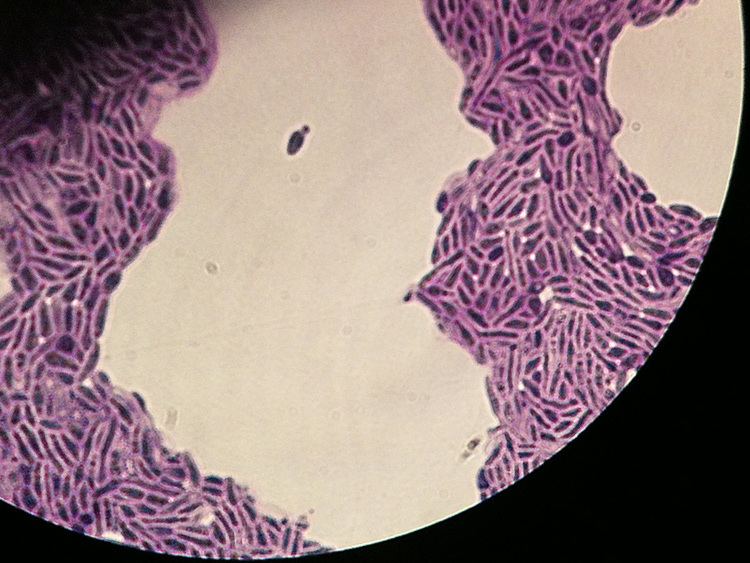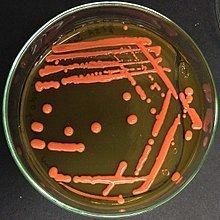Kingdom Fungi Order Sporidiales Scientific name Rhodotorula Rank Genus | Division Basidiomycota Family Sporidiobolaceae Higher classification Incertae sedis | |
 | ||
Similar Trichosporon, Cryptococcus, Sporobolomyces, Pichia, Geotrichum | ||
Rhodotorula fungi kingdom
Rhodotorula is a genus of unicellular pigmented yeasts, part of the division Basidiomycota. It is readily identifiable by distinctive orange/red colonies when grown on SDA (Sabouraud's Dextrose Agar). This distinctive color is the result of pigments that the yeast creates to block out certain wavelengths of light (620–750 nm) that would otherwise be damaging to the cell.
Contents

Rhodotorula sp
Habitat

Rhodotorula is a common environmental inhabitant. It can be cultured from soil, water, milk, fruit juice, and air samples. It is able to scavenge nitrogenous compounds from its environment remarkably well, growing even in air that has been carefully cleaned of any fixed nitrogen contaminants. In such conditions, the nitrogen content of the dry weight of Rhodotorula can drop as low as 1%, compared to around 14% for most bacteria growing in normal conditions.
Pathology

Only Rhodotorula mucilaginosa, R. glutinis, and R. minuta have been known to cause disease in humans. There were no reported cases of Rhodotorula infections before 1985. There were however forty-three reported cases of Rhodotorula bloodstream infections (BSIs) between 1960 and 2000. Rhodotorula is most commonly found in patients who are immunosuppressed and/or are using foreign-body technology such as central venous catheters. Rhodotorula is commonly treated by removing the catheter and the use of anti-fungals. Rhodotorula is susceptible to amphotericin B and Flucytosine.

Rhodotorula can also cause infections in animals. There have been reports of skin infections in chickens and sea animals and lung infections and otitis in sheep and cattle.
Potential in bioremediation
One area in which Rhodotorula species may become of importance is in bioremediation, especially of contaminated water sites. Although typically bacteria are commonly used bioremediation studies, there are more fungal studies now than ever. As with bacteria, fungi can naturally develop modified metabolism to deal with environmental contaminants, and could then be used in bioremediation. One main target is often polycyclic aromatic hydrocarbons (PAHs) since they often persist in the environment and have high levels of toxicity. Through sediment analysis and testing of contaminated waters Rhodotorula were found to be common in contaminated sites. It was noted in samples taken from contaminated waters that Rhodotorula species had the ability to degrade petroleum compounds. These studies as well as others suggest that Rhodotorula species may be good candidates for bioremediation of polluted waters for PAHs. In more directed studies a number of species of Rhodotorula were found to be able to degrade a number of specific contaminants. For example, R. glutinis and R. rubra have both been found to have a high ability to degrade phenanthrene, while R. minuta has been found to degrade benzo(a)anthracene. In a mixed fungal community Rhodotorula species contributed to effective degradation of low molecular weight PAHs, and although bacterial communities alone were not able to, the fungal communities also degraded high molecular weight PAHs (more than 3 benzene rings) such as chrysene and benzo(a)pyrene.
